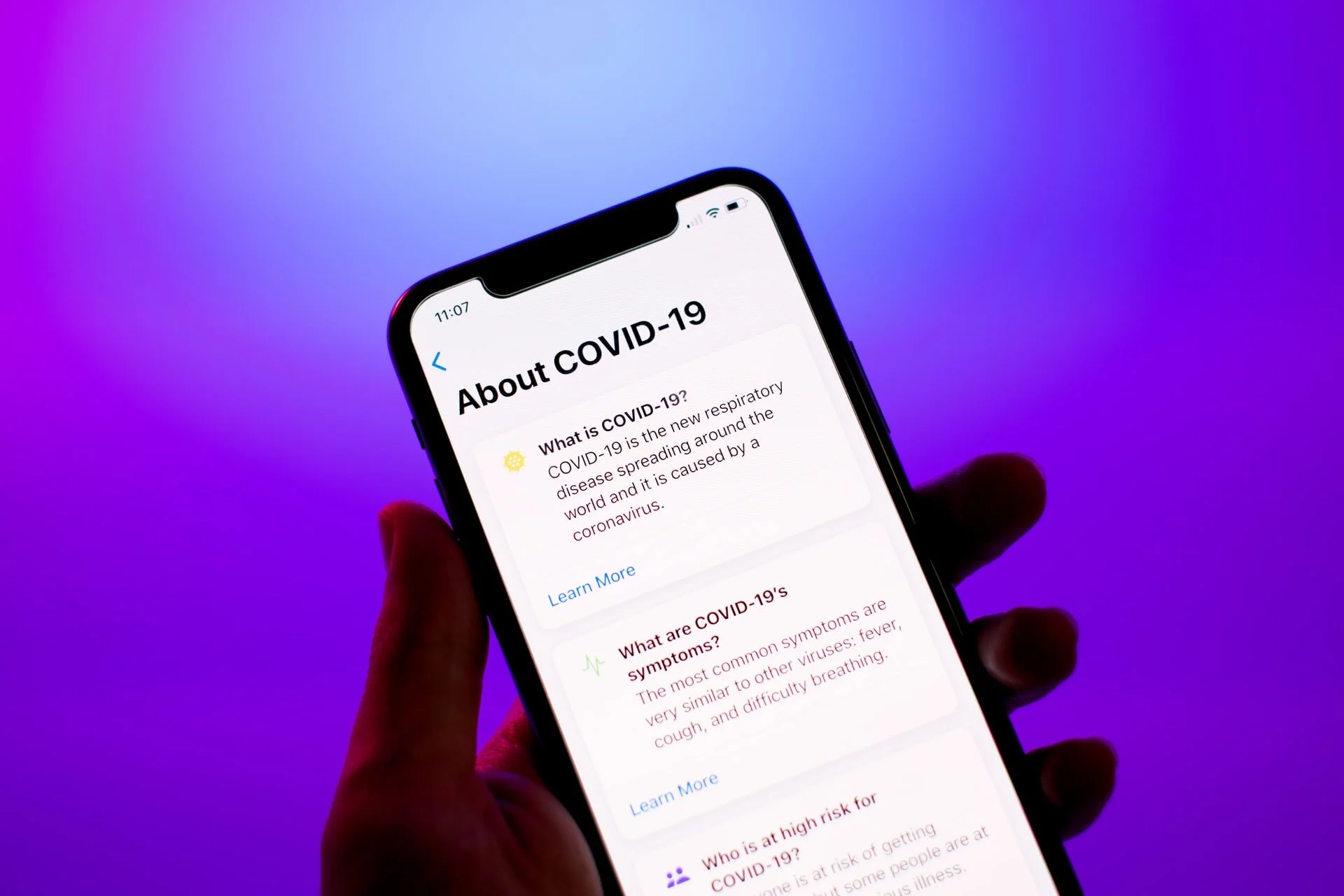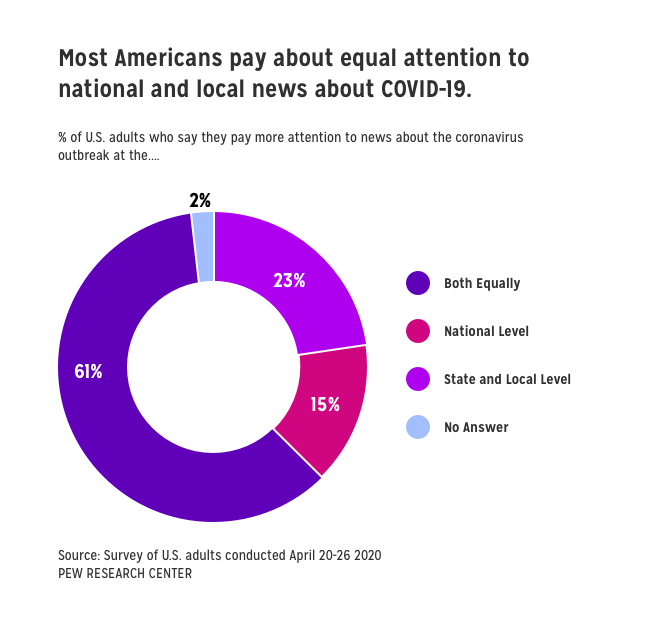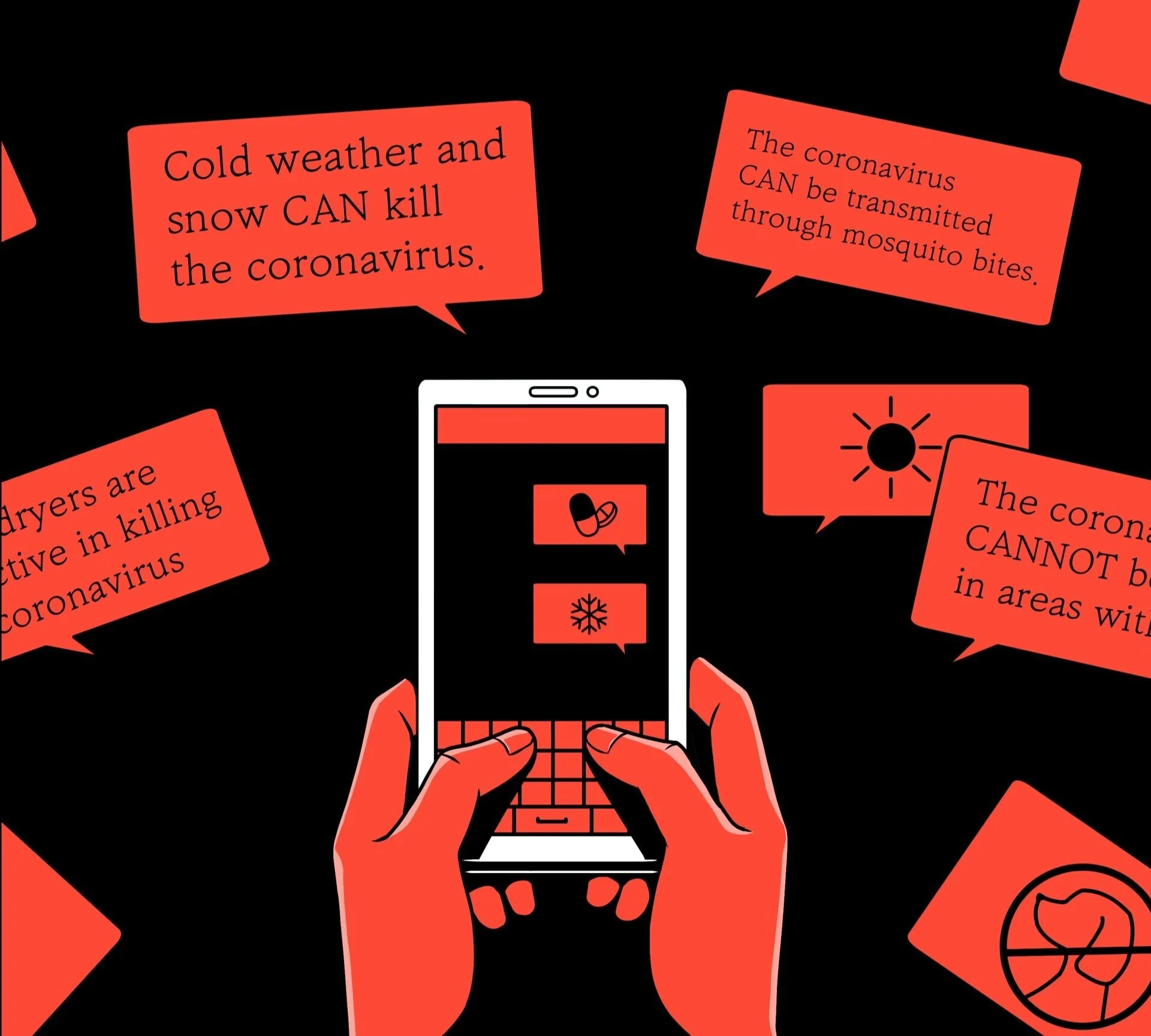Why the US needs Product Designers during the COVID-19 pandemic.
Product Designers have a unique opportunity to help prevent disinformation during the pandemic.
Photo by Brian McGowan on Unsplash
Looking back to mid-March 2020, nothing could have prepared me (or any other average person) for where we are now. What seemed like an extended two weeks of working remote, turned into six months working from home. What followed soon after was a blur of rapid and drastic changes. All of a sudden, I was glued to my phone, filled with trepidation and uncertainty, and desperate for updates about COVID-19, as the world came to grips with the growing pandemic.
As Product Designers, it is our responsibility to help people find trusted information in a format easy to understand and digest. Most critically during these troubled times, our work can give readers the tools to identify false information in our media. Being a Product Designer now means that we are part of something larger, connecting and informing communities while combating the dangerous and deadly spread of false information.
How are people digesting information about COVID-19?
Photo by Engin Akyurt on Unsplash
The pandemic abruptly changed our social interactions with each other. However, the need for accurate and trustworthy news has not changed. Rather, it has heightened and become even more critical. Where are people getting their trusted news these days? As an avid local news viewer and reader, I always turn to my local journalists for my online COVID-19 updates. As it turns out, I am not alone in this. A Pew Research Center study showed Americans, during the pandemic, have payed roughly equal attention to local and national news. For us as Product Designers, this is crucial information, identifying our different user needs and where our focus should lie.
How are we identifying misinformation online?
Image created by Redgirl Lee.
Knowing how to identify a source, its relevance, and the veracity of its information has become increasingly difficult through online platforms. How can you trust what you see online is telling you the objective truth? Is there such a thing? As Product Designers, how can we identify for users what is true and what is not? Firstly, we need to seek a deeper understanding of the information we are being asked to present. Secondly, we must consider our own biases and not allow our subjectivity to color our work. Lastly, we must examine the content and source of the information we’re presenting and ensure its transparency. With people looking for the most relevant, up-to-date information, they may also be looking for to find the answers to validate their own biases. We need to help individuals identify what is true or what is false by questioning and discovering the information presented before them.
“About three-in-ten U.S. adults (28%) say they are very confident that they would know what steps to take to check the accuracy of news and information about the coronavirus outbreak. [2]”
To better understand how to prevent the spread of disinformation, we need to identify what kinds of misinformation there are. A study conducted by the The American Journal of Tropical Medicine and Hygiene about “COVID-19–Related Infodemic and Its Impact on Public Health: A Global Social Media Analysis” identifies different categories of disinformation that exist and are currently being circulated surrounding COVID-19. I found the most critical categories to be: rumors, stigmas and conspiracy theories as I believe these have had the greatest impacts on online media.
The spread of misinformation is not novel to the COVID-19 pandemic. The most recent and notable examples have been well documented in current American politics. However, what makes misinformation even more perilous during this pandemic, more unique, and concerning, is its direct influence on our physical health and safety. Even the U.N. Secretary-General Antonio Guterres, has weighed in on the dangers of “pandemic of misinformation” in combatting the virus.4
“The public needs to more closely scrutinize and be “much more skeptical” about what they’re reading and hearing, particularly online [4]”
To some, this “fake news” has been deadly, with the CDC reporting a spike in poisoning deaths linked to false COVID-19 cures. To others, the lack of scrutiny in their information sources has led to the denial and dismissal of expert opinions.
Using the double diamond to fight misinformation.
Product Designers can help prevent misinformation about COVID-19 by analyzing our double diamond process. In the double diamond, we split our development by discovering (research), defining (synthesis), developing (ideation), and delivering (implementation). We take these steps to ‘do the right things’ before we ‘do things right’. Starting with research, we need to discover who our users are, what information they are looking for about COVID-19, and how they identify information as trustworthy. The reason why COVID-19 pandemic gives Product Designers a unique opportunity to helping solve the issue of spreading misinformation online is because we are now able to focus our research on a single topic and identify the problem and solve for a solution.
https://www.nngroup.com/articles/discovery-phase/
Where do we go from here?
Photo by Brian McGowan on Unsplash
Product Designers can learn to from news platforms and search engines such as Google, The Washington Post, and the USA Today Network (national and local); on how information is being validated, and how it is being shared. Applying the same processes on how news and media platforms verify and validate data, and to help users identify misinformation correctly.
This is not an easy problem to solve, but stopping the spread of misinformation of COVID-19 will in turn support future efforts to combat campaigns of misinformation on other topics. We as Product Designers have the skills to solve these issues and help our communities receive the vital information they need.
References & Sources
1 Shearer, Elisa. “Local News Is Playing an Important Role for Americans during COVID-19 Outbreak.” Pew Research Center, Pew Research Center, 18 Aug. 2020, www.pewresearch.org/fact-tank/2020/07/02/local-news-is-playing-an-important-role-for-americans-during-covid-19-outbreak/.
2 Gottfried, Jeffrey. “Around Three-in-Ten Americans Are Very Confident They Could Fact-Check News about COVID-19.” Pew Research Center, Pew Research Center, 17 Aug. 2020, www.pewresearch.org/fact-tank/2020/05/28/around-three-in-ten-americans-are-very-confident-they-could-fact-check-news-about-covid-19/.
3 Islam, Md Saiful, et al. “COVID-19–Related Infodemic and Its Impact on Public Health: A Global Social Media Analysis.” COVID-19–Related Infodemic and Its Impact on Public Health: A Global Social Media Analysis | The American Journal of Tropical Medicine and Hygiene, The American Journal of Tropical Medicine and Hygiene, 10 Aug. 2020, www.ajtmh.org/content/journals/10.4269/ajtmh.20-0812.
4 Pazzanese, Christina. “Social Media Used to Spread, Create COVID-19 Falsehoods.” Harvard Gazette, Harvard Gazette, 11 May 2020, news.harvard.edu/gazette/story/2020/05/social-media-used-to-spread-create-covid-19-falsehoods/.
Websites Referenced







